| Sharks of the genus Squalus with serrated cutting edges survived from the Late Cretaceous to the Middle Miocene. Examine the cutting edges of these extinct shark species for use in identifying fossil shark teeth. For this purpose, we considered creating images of the cutting edges of fossil shark teeth. As shown in the figure below, three types of images of fossil shark teeth were created: mesial cutting edge (M), distal cutting edge (D), and distal heel cutting edge (Dh). |
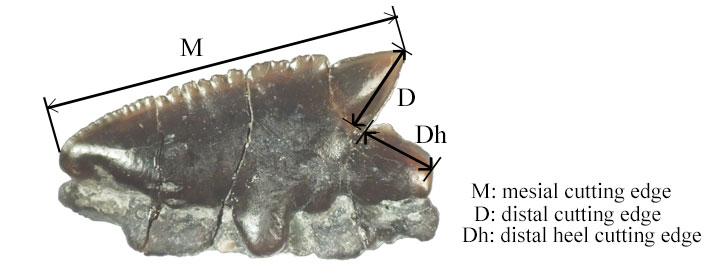
| Fig. 1. Three types of images of Squalus nicholsae: mesial cutting edge (M), distal cutting edge (D), and distal heel cutting edge (Dh) |

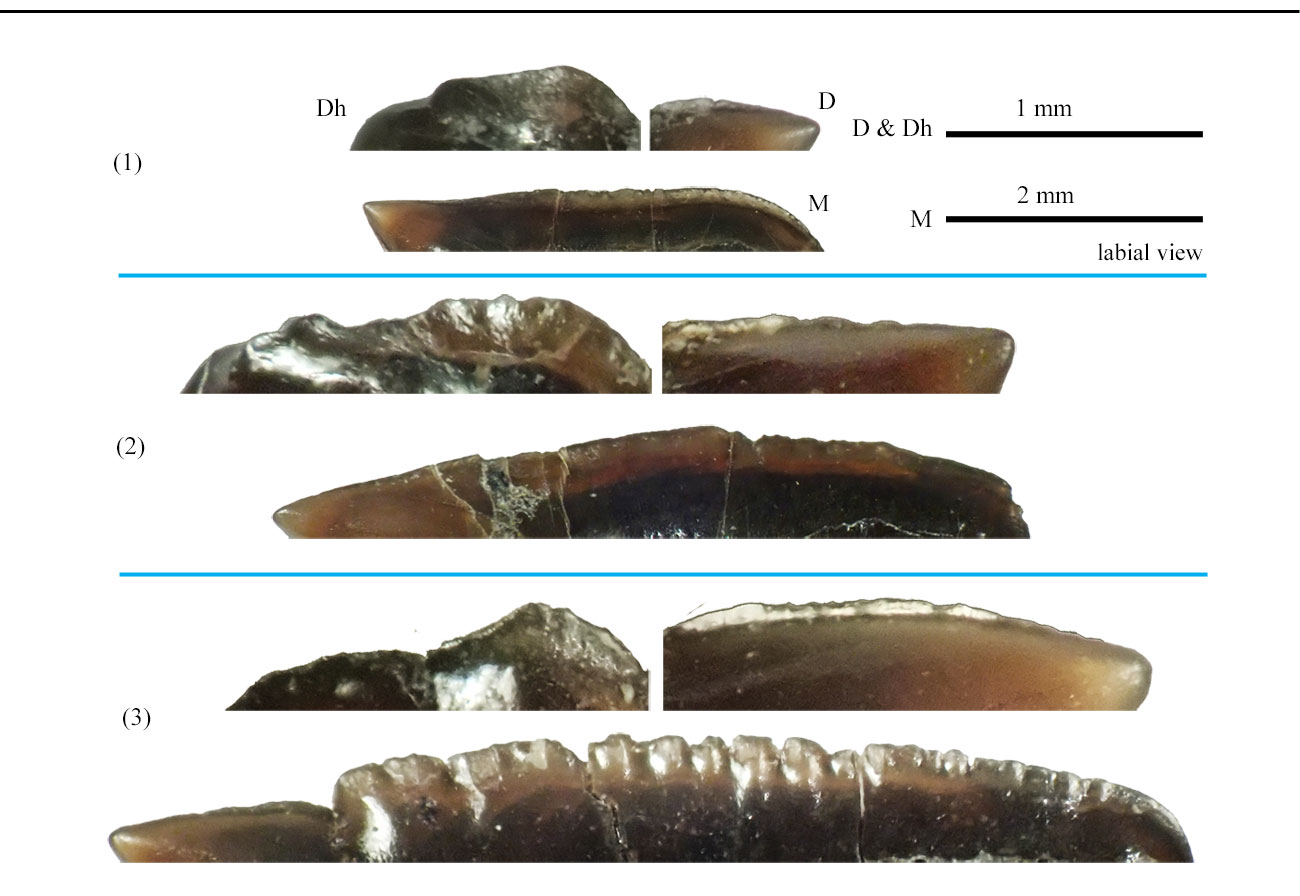
| The three serrations on the teeth of S. nicholsae are mostly trace-like, but some teeth have prominent serrations. Depending on the growth process of individual sharks and the sexes, the serrations may vary from barely visible to prominent, along with the size of the teeth. This seems to be a trend also seen in the Paleocene species Squalus orpiensis. Perhaps, even if the sharks are of the same species, it is conceivable that serrations have not yet been produced in smaller individuals, such as juveniles. |

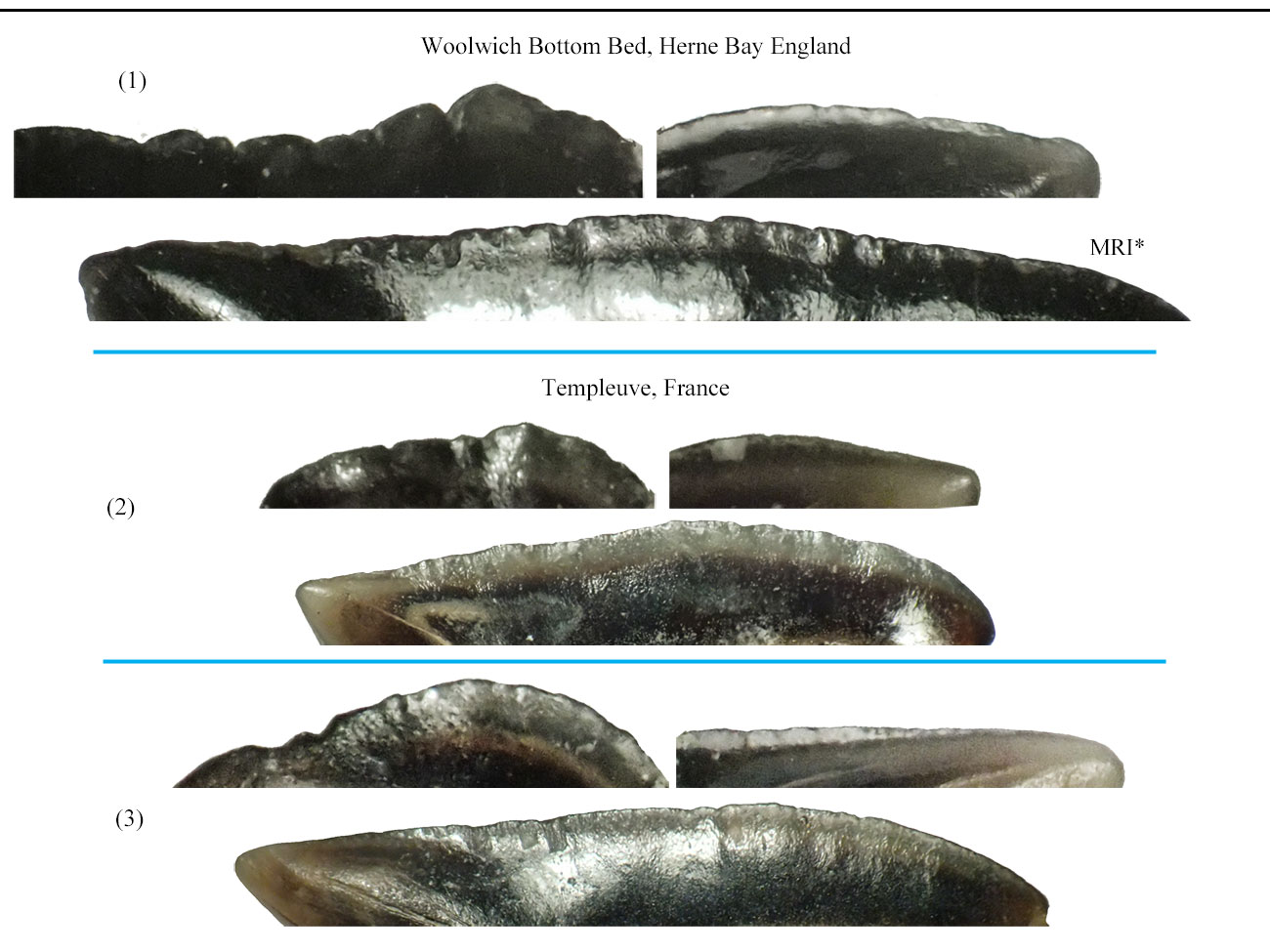
| The serrations of the teeth of Squalus orpiensis are very similar to those of the Late Cretaceous species S. nicholsae. In particular, the lack of prominent serrations on the distal cutting edge is the same in both species. Sharks with these weakly serrated teeth seem to have survived from the Late Cretaceous to the Eocene with little change. |

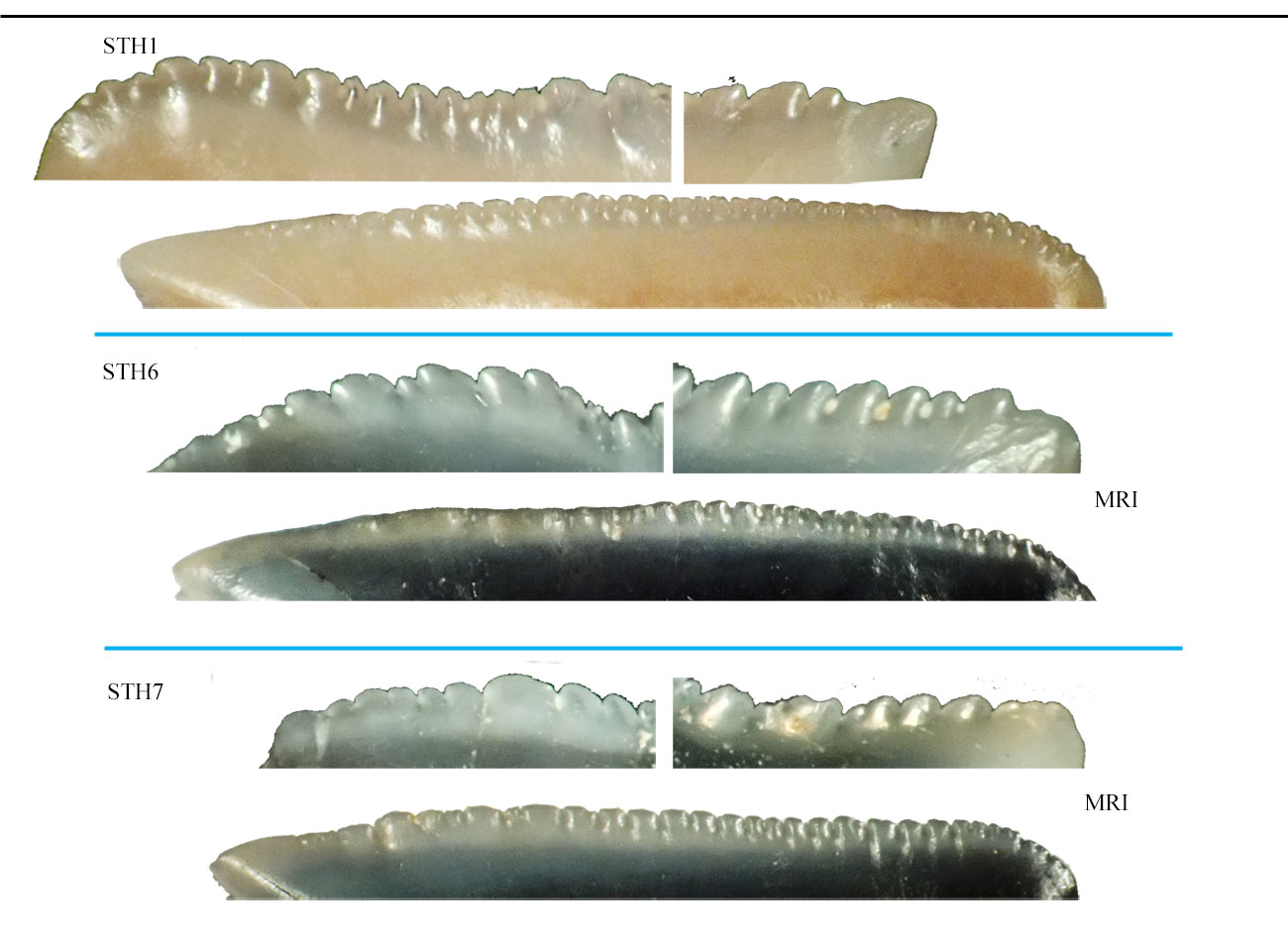
| The shape of the three serrations on the teeth of the Miocene species Squalus occidentalis differs from those of species up to the Paleocene in that they all evolved into prominent serrations, although diversity in their shape is observed. |

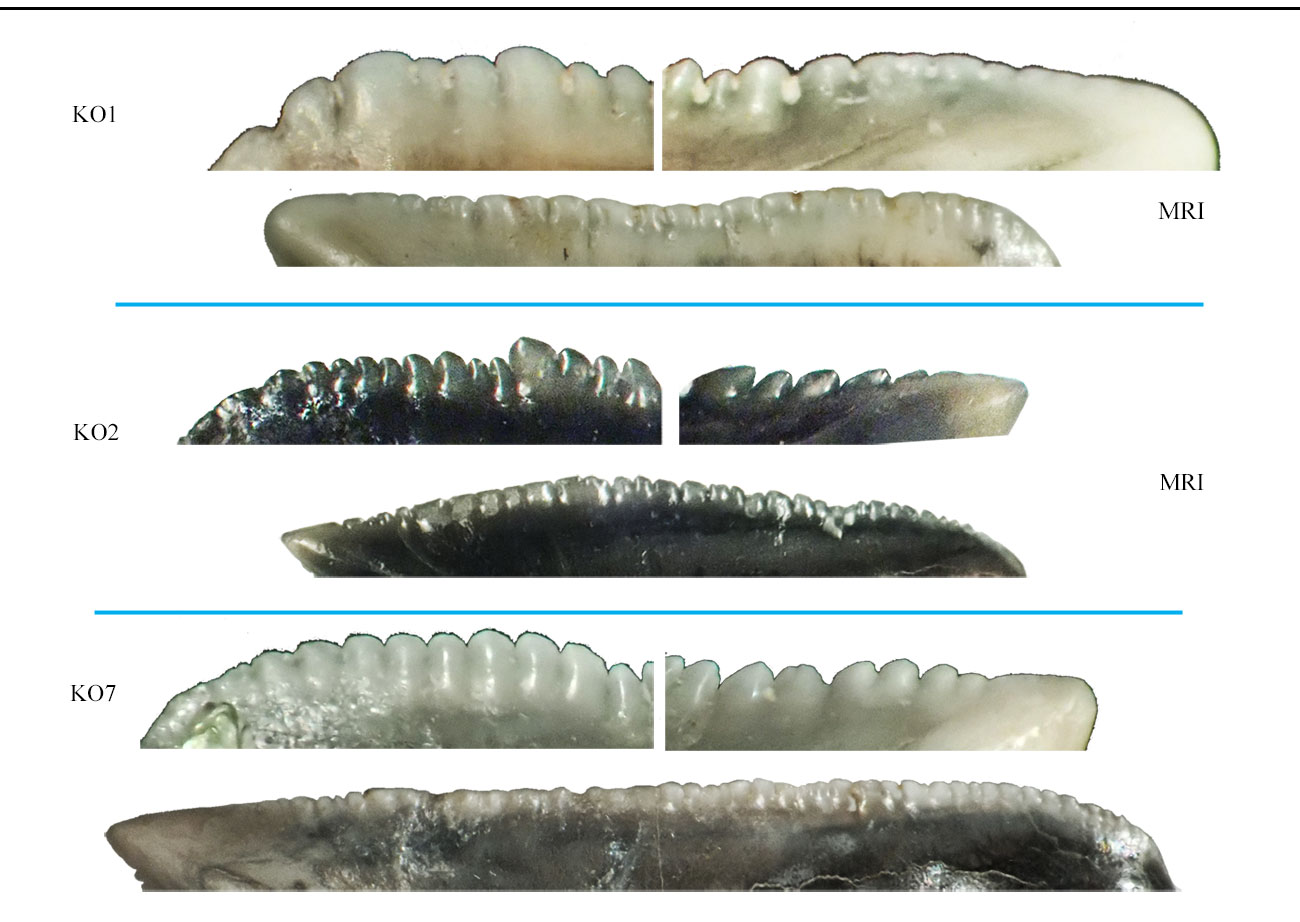
| The serrations of the teeth of fossil sharks of the Koderayama Formation are similar to those of S. occidentalis. |
| Aug. 03,2024 |
| MRI*; Mirror reversed image |
| REFERENCES |
| 1. Cappetta, H. & Morrison, K. & Adnet, S. (2021) A shark fauna from the Campanian of Hornby Island, British Columbia, Canada: an insight into the diversity of Cretaceous deep-water assemblages. Historical Biology, 33(8), 1121–1182 2. Winkler, T.C. (1874) Mémoire sur quelques restes de poissons du système heersien. Archives du Musée Teyler, 4(1), 1–15 (Notidanus orpiensis Winkler, 1874) |